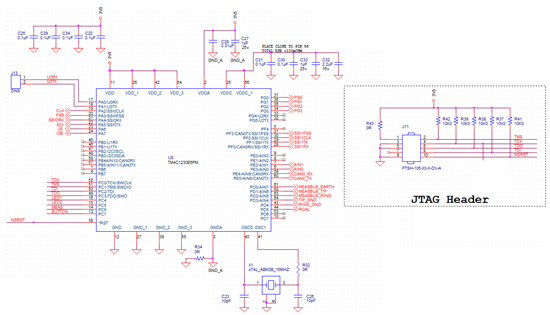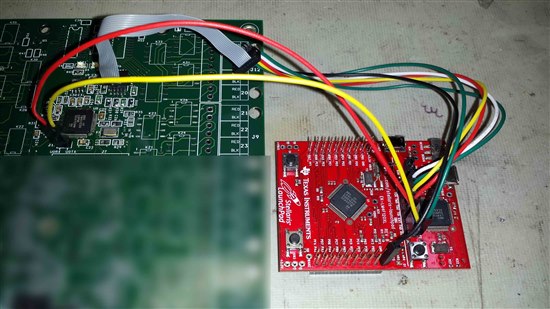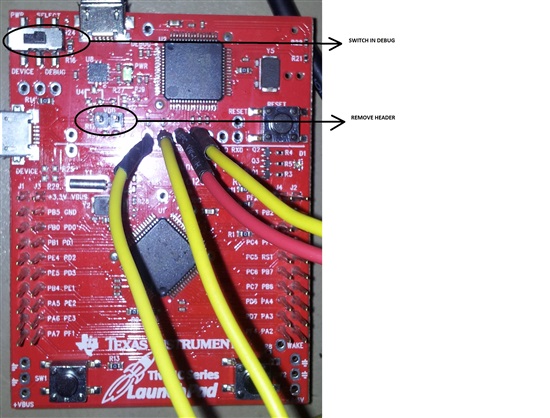Hello all, I am a newbie at microcontrollers and have been developing a product using the LM4F120 Launchpad and IAR Embedded Workbench. The initial code development has been going very well. In the new design we chose the TM4C1230E6PM. I am now in the process of starting up the first PCB, and am having issues with initial board startup. I am using the Launchpad configured for Debug Out per this link: http://processors.wiki.ti.com/index.php/Stellaris_LM4F120_LaunchPad_Debug_How_To
I have not been able to locate a schematic for a reference design using the TM4C1230E6PM.
When trying to debug with the Launchpad in Debug Out into the target, IAR throws a failure to initialize JTAG error. I did set the Device in Options in IAR to TM4C1230E6PM. I have double checked the connections between the Launchpad and target. If I set the Launchpad back to its internal target, it will initialize and work correctly.
I also probed the OSC pins 40 and 41 of the TM4C1230E6PM with a scope, and see only around 1VDC. The internal regulator voltages (pins 25 and 56) plus VCC appear to be correct.
Pleas find an image of the target schematic attached. My questions are:
1) With a new TM4C1230E6PM set up like the target schematic, should the OSC pins show oscillation, or is there setup or pin transitions required? Or does the uC use the internal oscillator and will not show any external indication of clock operation until the external clock is configured? The answer will help me to determine if maybe my uC is shot and needs to be replaced, or if there is a PCB error.
2) Is there perhaps a pin on the TM4C1230E6PM, such as /WAKE on the LM4F120, that needs to be pulled high or low for the uC to wake up?
3) Should the LM4F120 Launchpad be able to work as a debug JTAG for a target with a TM4C1230E6PM?
Thank you very much for all responses and help.




